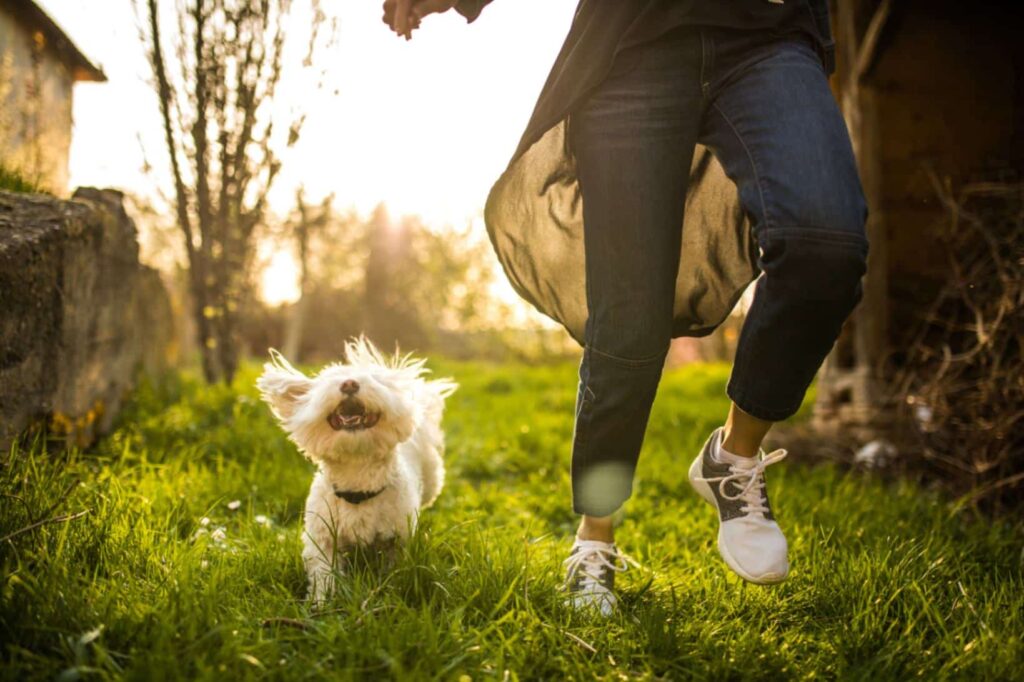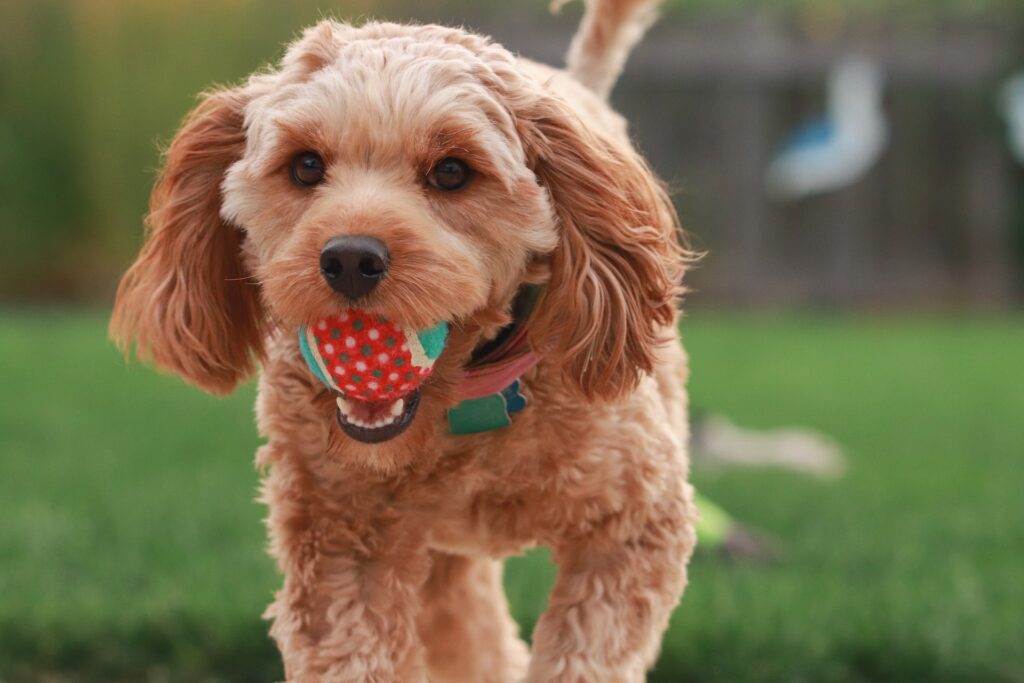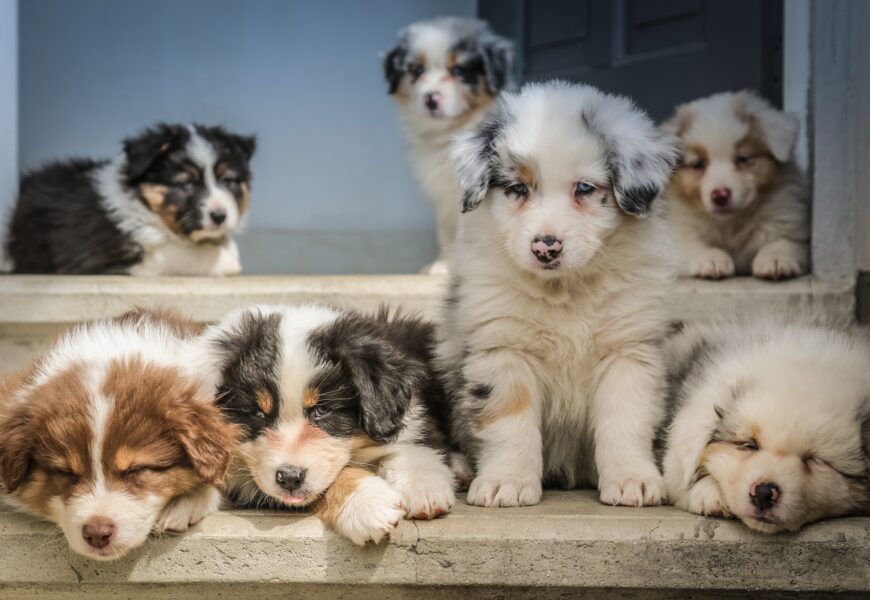Discover effective puppy potty training tips to transform your adorable ball of fur into a well-mannered companion. Get expert insights and step-by-step guidance for a successful potty training journey.
KEY TAKEAWAYS
- Potty training is a crucial foundation for a well-behaved and harmonious relationship with your puppy.
- Adhere to a regular potty schedule, especially after meals, play, and waking up.
- Utilize positive reinforcement with treats, praise, and affection to encourage desired behavior.
- Monitor your puppy for signs like restlessness or circling to predict potty needs.
- Address accidents calmly, without punishment, and clean thoroughly to prevent repeats.
- Transition gradually from indoor pee pads to outdoor potty for long-term success.
- Seek professional help if challenges persist, focusing on understanding and patience.
Puppies fill our lives with endless happiness and contagious enthusiasm, but the road to a well-behaved and housetrained dog demands dedication and some know-how. You’ve come to the perfect spot if you just brought home a new puppy. In this post, we’ll take a trip through the land of puppy toilet training advice, where you’ll learn all you need to know to successfully raise your new best buddy. We’ll go through everything you need to know, from laying the groundwork to overcoming obstacles, to make sure you and your cute dog can live together happily ever after.
While bringing home a new puppy is a joyful experience, it is not without its share of problems, and toilet training is a frontrunner in this category. Have no fear! You may transform your early failures into impressive achievements with the help of experienced mentors and a can-do attitude. In this detailed manual, we’ll cover every aspect of housebreaking your puppy. We have your back every step of the process, from laying the framework to addressing typical hurdles and frequently asked questions.
Why Puppy Training is Important?

Few things are as important as toilet training when it comes to raising a well-behaved and satisfied dog. This first effort not only encourages proper conduct but also sets the stage for a peaceful relationship with your canine pal. Locating a convenient restroom and planning bathroom breaks at regular intervals are two of the most important aspects of this approach.
It’s crucial that you take your dog to an appropriate area for toilet breaks. This set apart area must be both convenient and consistent. Dogs are naturally habitual animals and benefit greatly from regular schedules. Having a distinct bathroom or toilet space may help children learn the difference between the two. Follow these guidelines to master this facet of your training:
Consistency: Find a permanent location for toilet use. Your puppy will eventually learn to use that spot as its restroom whenever it has to relieve itself. Your pet may get confused and obstruct your progress if you move around a lot.
Take Advantage of Nature: When possible, hold the event in the open air. The outdoors reinforces the mentality that going to the bathroom is an adventure. In addition, your dog’s natural tendency to relieve themselves may be stimulated by the odors and surroundings.
Peace and Security: Choose somewhere quiet and safe. Puppies may get anxious or distracted in crowded public spaces, which may increase the risk of their being hurt.
Location Nearby Playing Areas: Don’t put your puppy’s pee area too close to where it sleeps or plays. A dog’s natural tendency is to avoid marking its territory in living and sleeping quarters.
In this training effort, the timing of bathroom breaks is just as crucial. Due to their smaller bladders and higher metabolism, puppies need frequent bathroom breaks. How to efficiently handle their time together is as follows:
Frequent Intervals: When pups are young, they need to go for walks every hour or two. They eventually grow up to be able to keep it together for long periods of time. You’ll need to make adjustments to the frequency as your puppy develops.
After-Event Procedures: After consuming food or playtime, or after waking up from sleep or drinking water, puppies frequently need to relieve themselves. When this happens, you should go outside right away.
The Nightly Routine: Make sure your dog goes outside to relieve themselves just before sleep. This helps prevent sleep-disrupting mishaps at night and allows for a more restful night’s rest.
Affirmative Action: Praise and treat your dog when it uses the bathroom in the right place. By associating the behavior with positive outcomes, such reinforcement serves to increase the frequency with which it occurs.
The ability to toilet train a puppy effectively is crucial for the upbringing of a well-mannered dog. Selecting the toilet area wisely and sticking to a schedule can set your puppy up for success. The keys to a successful toilet training journey with your cherished companion are patience, positive reinforcement, and sensitivity to your puppy’s signals.
Crates for Toilet Training:
Many experts on dogs agree that crate training is an effective tool in the fight against housebreaking problems. The concept might evoke images of confinement, but in reality, it taps into a dog’s innate denning instincts. Crate training may help establish good elimination routines by capitalizing on this innate propensity. To make the most of crates, follow these steps:
Acclimatization, Step by Step: To get started, take baby steps while introducing your puppy to the crate. Allow children to discover it on their own time, but watch out that they only have good memories associated with it.
Proper Ratios: Your dog ought to be able to fully extend his or her body in the crate, as well as stand up, lay down, and turn around in it. However, the den-like effect created by a too-large cage may be lost on the pet.
Regular Urinary Absence: During the course of toilet training, the crate may be used effectively. Always cage your dog when you can’t keep an eye on them. This method reduces their freedom of movement and allows you to anticipate when they need a bathroom break.
Integrity is Essential: Maintain a regular crate timetable. Puppies thrive best with a consistent schedule, and that same regularity makes training much easier.

By stocking it with their favorite goodies, toys, and soft blankets, you can turn the cage into a happy place where your pet looks forward to spending time. As a result, the container becomes associated with positive feelings rather than negative ones. Make sure your puppy has a clean, secure, and healthy space to play in.
Learning how to make a comfortable home in a confined space like a crate is a skill worth developing. Your pet’s training will go more smoothly and he or she will feel more at ease in the crate if it is tight and safe. Furnish the container with comfy blankets and pillows. This not only increases convenience, but it also acts as a cushion for any mishaps that may occur, making cleaning much easier. Choose to have low lighting levels. This creates an ambiance similar to that of a den, which dogs naturally find comforting. Put something inside the container that smells like you. Particularly in the early stages of training, this olfactory connection might provide comfort.
Policy of Open Door: Keep the kennel door open at first so your puppy may explore the room. Thus, the fear of being trapped is diminished, and participation is prompted voluntarily.
The amount of time your puppy spends in the closed crate should be increased gradually over time. This prepares children psychologically for the experience of being alone in a small place. Importantly, the box should never be used as a form of punishment. It should continue to be a safe haven and not become connected with criticism.
When you include crate training in your puppy’s potty training routine, you create a positive association between the crate and the toilet. By appealing to your dog’s natural tendencies, you may help him or her create positive routines while also providing a safe haven where they can relax.
What Strategies to Adopt for Effective Puppy Potty Training?
Consistency and regularity are the cornerstones of success when it comes to toilet training a dog. Your puppy will learn faster and feel more secure if you establish a consistent restroom regimen for him or her from an early age. Learn the ins and outs of this crucial tactic below:
The Importance of a Regular Toileting Routine: Having a routine is great for dogs. Make a plan that includes bathroom breaks on a regular basis. Take your puppy out for bathroom breaks at around the same times every day.
The Importance of Consistency in Potty Training: Regularity increases comfort, and comfort increases chances of success. Your dog will learn when it is time to go potty if you stick to a regular schedule and reward good behavior. This reduces the potential for misunderstandings and quickens the acquisition of good routines.
Techniques of positive reinforcement
Incorporating positive reinforcement into your puppy’s toilet training is like adding a little magic. Through positive reinforcement, you may teach your pet desirable behaviors while simultaneously strengthening your bond with it.
Positive reinforcement for desired behavior: Give your dog plenty of praise and treats when it uses the bathroom outside. This pleasant connection further supports the idea that proper placement always yields desirable effects.
Effective use of rewards and compliments: To motivate a dog during training, nothing beats the appeal of a tasty treat. But moderation is key to avoiding excess. Acknowledging your puppy’s efforts with genuine verbal praise and loving gestures is just as important as rewarding him with goodies.
Signals and signs monitoring
The skill of potty training relies on more than just routines and treats; it also requires careful attention to and an understanding of your puppy’s signals. Paying attention to their cues might help you avoid mishaps and strengthen your bond:
How to Read Your Puppy’s Potty-Time Cues: When puppies have to go potty, they typically give off subtle indications. Disinterested behavior, such as sniffing the ground, circling, or abruptly halting play, are common indicators. Figure out how to read these signs to foresee their requirements.
Accident Prevention by Constant Vigilance: The ability to control urination is not developed in puppies. Keep a watchful eye on them, particularly just after meals, during playing, and first thing in the morning to avoid any mishaps. Quickly react to their prompts to keep outside activities on schedule.
Learning to be consistent and systematic, using positive reward approaches, and keeping a close eye on your puppy are all essential skills for potty training success. You may pave the way for a peaceful and well-trained canine partner by sticking to a schedule, providing a pleasant learning environment, and learning to read your pup’s signs.
Facing Challenges and Making Mistakes?
Accident Management

Beginning the process of teaching a puppy to use the toilet is not without its challenges. Accidents are a normal part of your puppy’s development; but, how you respond to them may have a significant impact on his or her development.
How to Deal with Mishaps with Your Pup Without Discouraging It: Your dog is not deliberately rebelling when it has an accident. Calmly interrupt the mishap and lead your dog to the specified pee place instead of scolding or becoming frustrated with it. Maintain regularity going ahead.
Taking Care of the Mess the Right Way to Avoid Recurrences: Use enzymatic cleansers to completely eliminate smells from accident areas. Your dog may be tempted to return to the same location again if its smell was left there. Having nothing to look back on decreases the chances of future mishaps.
Keeping Out of Trouble
While it’s understandable to feel tempted to resort to punishment, it’s important to remember the damage that may be done to both your dog’s education and your connection with them.
The Harmful Effects of Discipline on Toilet Training: Puppies are easily traumatized by punishment. They could not connect their behavior to its consequences, but rather to your presence. This is dangerous because it erodes trust and slows down the training process.
Accepting the Need for Patience and Encouragement: Substitute patience and good reinforcement for punishment. Reward, praise, and redirection are all effective ways to encourage good conduct. Your dog will react better to positive reinforcement and training than to punishment.
Changing Over to an Outdoor Toilet, Step by Step: The shift from inside to outside toilet training is an important milestone for your dog. If you plan ahead for this transition, you can make it easier for your dog.
Changing Potty Training Locations: Put the designated toilet area closer to the exit first. Maintain the same signals and procedures as you make the transition to outside toilet breaks. Your dog’s toilet training won’t have to be retaught, since just the location will vary.
Making It Easier for Your Puppy: Your dog may first be terrified by the big outdoors. Accompany them on their first forays into outside toilet training and reassure them as needed. Their self-assurance will increase as they adjust to their new home.
Successful toilet training requires overcoming obstacles and avoiding typical pitfalls. By responding calmly to accidents, avoiding punitive measures, and gradually increasing the frequency of outside potty breaks, you may help create an environment where you and your dog can work together. Your steady and supportive attitude during this dynamic phase will provide the groundwork for your puppy’s development and strengthen the relationship you share.
Embarking on the journey of puppy potty training is not without its share of mishaps. Accidents are a natural part of the learning curve, but how you handle them can make all the difference in your pup’s progress:
Different Breeds, Different Considerations
When starting the toilet training process, it’s important to keep in mind that every breed of dog has its own quirks and inclinations. Training outcomes may be greatly improved by tailoring methods to account for three fundamental features:
Different Breeds’ Different Approaches to Housebreaking: The method of housebreaking a dog varies greatly depending on the breed. When compared to other breeds, some may be more independent or obstinate, while others are noted for their intelligence and ability to learn quickly. Smaller dog breeds often have smaller bladders, so they need to go outside more frequently.
Tailoring Your Methods for Maximum Efficiency: Train your dog in a way that is appropriate for its breed. While more autonomous breeds may benefit from more gentle supervision, intellectual breeds may react well to mental stimulation during toilet training. If you know what to expect from the breed of your puppy, you can tailor your training to get the best outcomes.
Puppy vs. Adult Dog Potty Training: There are important differences to keep in mind while housebreaking a puppy vs an adult dog. An effective training session requires a strategy tailored to the trainees’ age group.
Variations in Training Methods Across the Age Spectrum: Puppies have immature bladders and lack of self-control, necessitating more frequent trips to the bathroom and close supervision. However, older dogs may have ingrained behaviors that must be redirected. Make sure your training caters to these differences by taking into account the requirements of different ages.
Solving Problems Associated with Aging Dogs: Potty training might be more difficult for senior dogs due to entrenched behaviors or possible health problems. Having patience and empathy is crucial. The use of positive reinforcement and a return to fundamentals in training might hasten their adjustment to the new schedule. Expect a more drawn-out period of adaptation and relish in incremental progress.
When it comes to toilet training, it might be helpful to take into account the breed and age of your dog. To ensure a positive training experience for both you and your dog, it’s important to modify your training methods based on the dog’s age and stage of development.
In Short, The process of housebreaking a puppy takes time. Training a puppy to do this well takes a lot of time and work. The owner must be patient and give it time to flourish. There’s no set timeframe for how long it takes to master the potty.
Training a puppy to use the toilet is an undertaking that calls for compassion, insight, and optimism. Now that you have these pointers, you can help your animal buddy thrive. Keep in mind that every puppy is different, and your strategy should reflect that. The basis for a happy, well-behaved life together with your puppy may be laid with constant training, affection, and a desire to learn together.
Puppies fill our lives with endless happiness and contagious enthusiasm, but the road to a well-behaved and housetrained dog demands dedication and some know-how. You’ve come to the perfect spot if you just brought home a new puppy. In this post, we’ll take a trip through the land of puppy toilet training advice, where you’ll learn all you need to know to successfully raise your new best buddy. We’ll go through everything you need to know, from laying the groundwork to overcoming obstacles, to make sure you and your cute dog can live together happily ever after.




